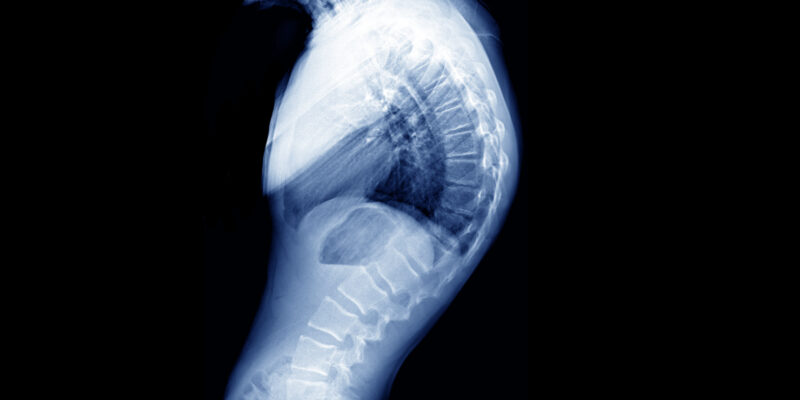
Paediatric Spine
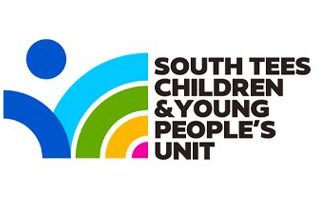
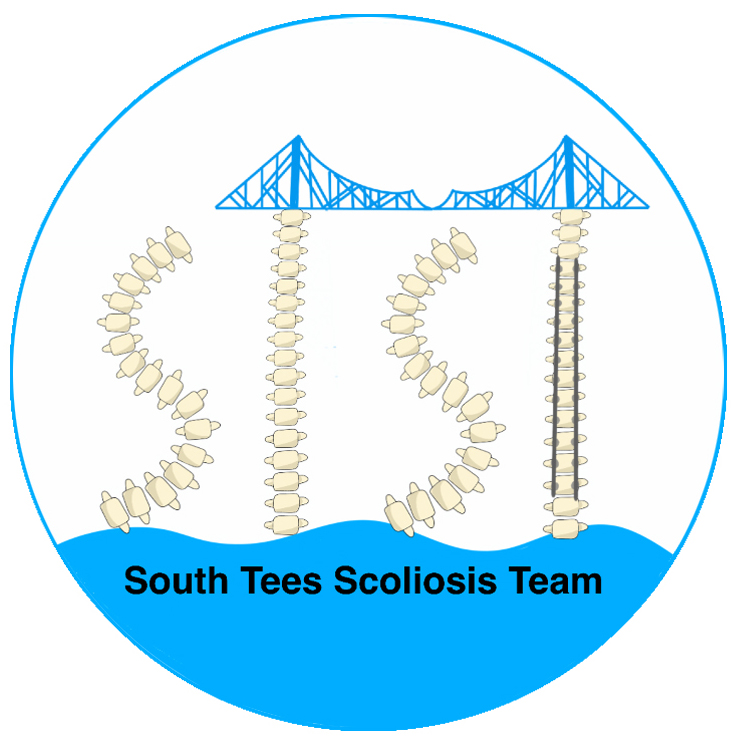
What is kyphosis?
Kyphosis is when the upper spine curves outward more than is normal, making the back appear more rounded. It is normal to have up to a 45° curve.
What causes kyphosis?
Kyphosis has no known specific cause but it can be caused by a structural problem with the spine, or bad posture.
How is kyphosis diagnosed?
Young people are most likely to present to clinic concerned about the appearance of their back. Older people may complain of back pain.
The surgeon in clinic will perform a physical examination to determine the flexibility of the curve. X-rays will be taken and questions asked about the problems and concerns you have, together with a brief medical history. You may also be referred for a MRI scan.
What is Scheuermann’s Kyphosis?
Sometimes kyphosis can be caused by a problem with the way the spine grows and develops. The back of the vertebrae in the upper part of the spine can grow more quickly than the front, causing the vertebrae to grow into a wedge shape. If this happens to several vertebrae, it causes the spine to curve.
This is known as Scheuermann’s kyphosis and often occurs in adolescents. If the rounded back cannot be straightened, the cause of the curve is more likely to be a problem with the spine like Scheuermann’s. This is the most common cause of structural kyphosis in adolescents.
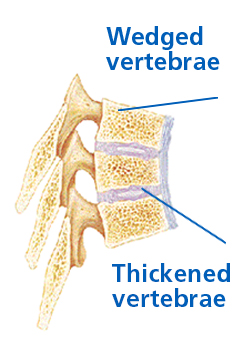
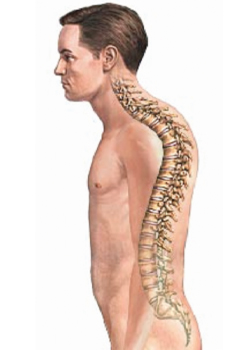
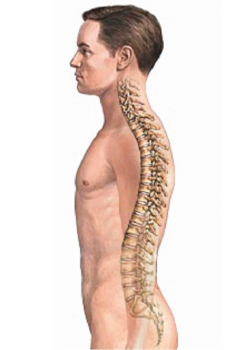
Kyphosis in adults
In adults, kyphosis can be caused by:
- Degenerative diseases of the spine (such as arthritis or disc degeneration)
- Fractures caused by osteoporosis
- Injury (trauma)
- Slipping of one vertebra forward on another (spondylolisthesis)
What are the problems associated with kyphosis?
The back may appear hunched, depending on how severe the curve is. There may be stiffness and back pain. In very severe cases kyphosis can cause breathing difficulties and problems with eating.
The curve of the spine causes the chest to have less room inside the chest cavity. If the deformity is severe, the chest cannot expand fully when you breathe. Eventually, the heart can be affected by the poor lung function. In later life, there may be a tendency to develop osteoarthritis.
What can be done about kyphosis?
It depends on the cause. Kyphosis caused by bad posture can be corrected by improving the posture. Mild cases of kyphosis due to structural problems may also be treated conservatively, with just monitoring in clinic. If causing concern, it can be treated with bracing and physiotherapy. Severe cases may need corrective surgery.
What does bracing do?
The brace is designed to hold the spine in a straighter, upright posture. Bracing aims to guide vertebral growth to straighten the spine in patients who are still growing. This is thought to work by taking pressure off the front of the vertebra, allowing the growth of the bone in the front to catch up with the growth in the back of the vertebra.
A brace may be used in older patients to support the spine and relieve pain, but it will not actually change the curve in these patients.
What does surgery involve?
Spinal fusion to correct kyphosis is complicated and is only done if the curve is very large, getting worse, and the kyphosis is having an adverse affect on the person’s life. The surgery carries risks and is only recommended if it is thought that the benefits outweigh these risks.
The surgery is carried out under general anaesthetic and can take many hours. It involves making an incision in the back and the spine straightened using metal rods and screws, and then fused using grafted bone.
Contact details
- Ward 22
Telephone: 01642 854522 (24 hours) - PCCU
Telephone: 01642 854667 (24 hours) - Mr Zak Choudhury’s secretary
Telephone: 01642 835564 - Mr Prasad Karpe’s secretary
Telephone: 01642 854311 - Ms Toni Isaacson’s secretary
Telephone: 01642 850850, extension 55310 - Cheryl Honeyman, Nurse Specialist
Telephone: 01642 850850 extension 56266
Mobile number: 0793 536 1881
Email: [email protected] - General enquiries
Email: [email protected]
Patient experience
South Tees Hospitals NHS Foundation Trust would like your feedback. If you wish to share your experience about your care and treatment or on behalf of a patient, please contact The Patient Experience Department who will advise you on how best to do this.
This service is based at The James Cook University Hospital but also covers the Friarage Hospital in Northallerton, our community hospitals and community health services.
To ensure we meet your communication needs please inform the Patient Experience Department of any special requirements, for example; braille or large print.
T: 01642 835964
E: [email protected]
The James Cook University Hospital, Marton Road, Middlesbrough, TS4 3BW.
Telephone: 01642 850850
